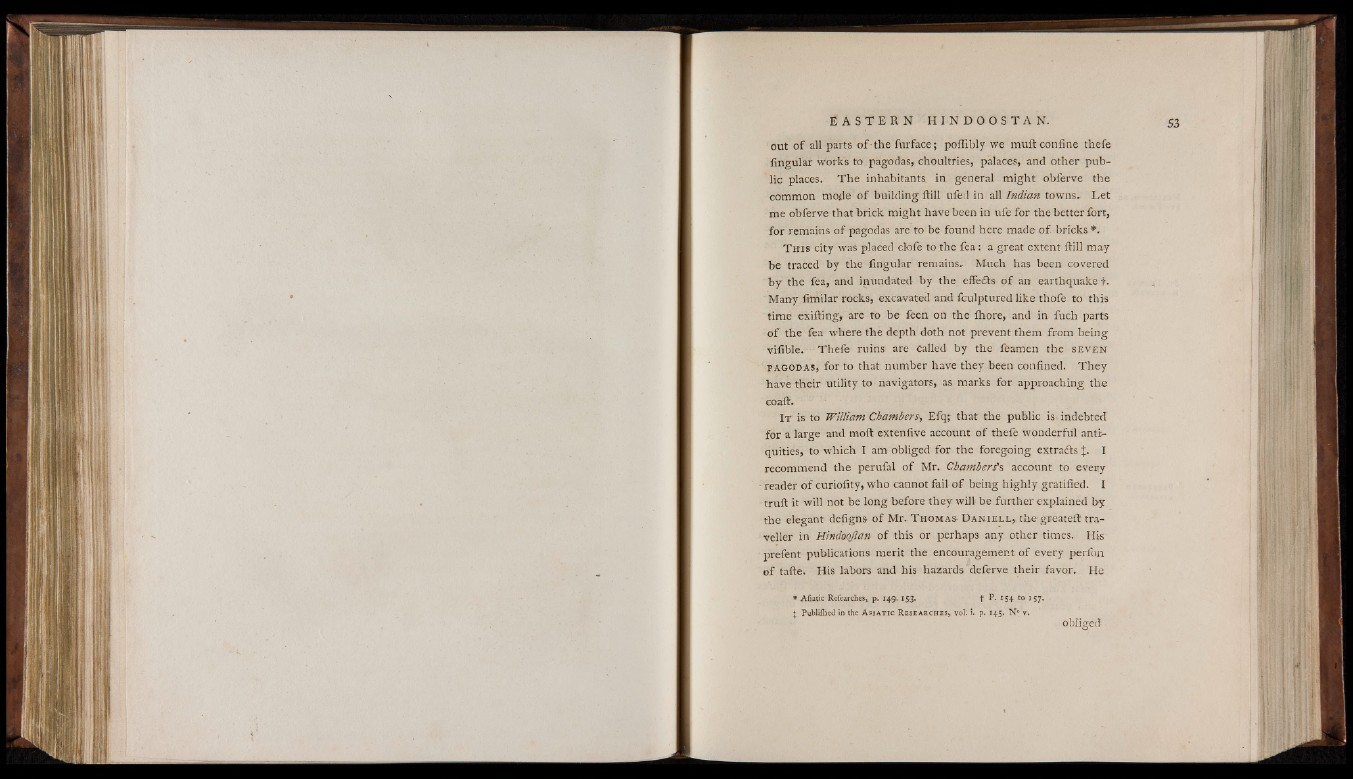
out of all parts o f the furface; pofiibly we mult confine thefe
fingular works to pagodas, choultries, palaces, and other public
places. The inhabitants in general might obferve the
common mode of building ftill ufed in all Indian towns. Let
me obferve that brick might have been in life for the better fort,
for remains of pagodas are to be found here made o f bricks * .
T h i s city was placed clofe to the fea: a great extent ftill may
be traced by the fingular remains. Much has been covered
by the fea, and inundated by the effedts o f art earthquake t.
Many fimilar rocks, excavated and fculptured like thofe to this
time exifting, are to be feen on the fhore, and in fuch parts
o f the fea where the depth doth not prevent them from being
vifible. Thefe ruins are Called by the feamen the s e v e n
p a g o d a s , for to that number have they been confined. They
have their utility to navigators, as marks for approaching the
eoaft.
I t is to William Chambers, Efq; that the public is. indebted
for a large and moft extenfive account of thefe wonderful antiquities,
to which I am obliged for the foregoing extradtsf. I
recommend the perufal of Mr. Chambers's account to eveny
- reader of curiofity, who cannot fail o f being highly gratified. I
truft it will not be long before they will be further explained by
the elegant defigns o f Mr, T h o m a s D a n i e l l , . the greateft traveller
in Hindoojlan of this or perhaps any other times. His
prefent publications merit the encouragement of every perfon
of tafte. His labors and his hazards deferve their favor. He
* Afiatic Refearches, p. 14.9. 153. f P. 154.. to 157.
j Publiflied in the A s i a t i c R e s e a r c h e s , , vol'. i. p. 145. N ° v .
obliged